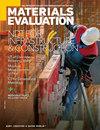增材制造部件无损检测的计算机断层扫描:机遇与局限
IF 0.3
4区 材料科学
Q4 MATERIALS SCIENCE, CHARACTERIZATION & TESTING
引用次数: 0
摘要
增材制造(AM)工艺已从大学研究实验室发展成为复杂形状部件的生产工艺。由于制造工艺的独特性,在工艺控制、质量保证和表面精加工方面出现了新的挑战。本文将展示无损射线检测(RT)技术计算机断层扫描(CT)如何在AM过程的每个步骤为质量保证做出有价值的贡献。CT的使用是通过使用激光粉末床熔化(LPBF)工艺制造的铬镍钢喷嘴的例子来证明的。然后使用Hirtisation工艺对喷嘴表面进行返工,Hirtisating工艺是一种基于电化学脉冲方法、流体动力学流动和颗粒辅助化学去除以及表面处理的商标零件精加工技术。除了已知的CT用于检测内部不连续性之外,CT还可用于确保足够的壁厚,测量内部通道表面粗糙度,并测量零件的几何正确性。在本文中,演示了如何在组件开发阶段使用这种RT技术来优化设计和生产过程。本文章由计算机程序翻译,如有差异,请以英文原文为准。
Computed Tomography for the Nondestructive Testing of Additive Manufactured Components: Opportunities and Limitations
The additive manufacturing (AM) process has grown from university research laboratories into a production process for complex-shaped components. Due to the uniqueness of the manufacturing process, new challenges have arisen regarding process control, quality assurance, and surface finishing. This paper will show how the nondestructive radiographic testing (RT) technique computed tomography (CT) can make a valuable contribution to quality assurance at each step of the AM process. The use of CT is demonstrated using an example of chrome-nickel steel nozzles manufactured using the laser powder bed fusion (LPBF) process. The surface of the nozzles is then reworked with the Hirtisation process, a trademarked part finishing technology that is based on a combination of electrochemical pulse methods, hydrodynamic flow and particle assisted chemical removal, and surface treatment. In addition to the already known use of CT for detecting internal discontinuities, CT can be used to ensure sufficient wall thickness, measure internal channel surface roughness, and gauge the geometrical correctness of parts. In this paper, it is demonstrated how to use this RT technique to optimize the design and production process during the component development phase.
求助全文
通过发布文献求助,成功后即可免费获取论文全文。
去求助
来源期刊

Materials Evaluation
工程技术-材料科学:表征与测试
CiteScore
0.90
自引率
16.70%
发文量
35
审稿时长
6-12 weeks
期刊介绍:
Materials Evaluation publishes articles, news and features intended to increase the NDT practitioner’s knowledge of the science and technology involved in the field, bringing informative articles to the NDT public while highlighting the ongoing efforts of ASNT to fulfill its mission. M.E. is a peer-reviewed journal, relying on technicians and researchers to help grow and educate its members by providing relevant, cutting-edge and exclusive content containing technical details and discussions. The only periodical of its kind, M.E. is circulated to members and nonmember paid subscribers. The magazine is truly international in scope, with readers in over 90 nations. The journal’s history and archive reaches back to the earliest formative days of the Society.
 求助内容:
求助内容: 应助结果提醒方式:
应助结果提醒方式:


